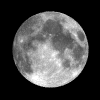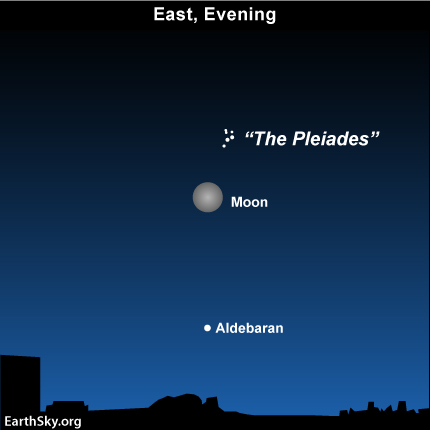Courtesy of EarthSky
A Clear Voice for Science
Visit EarthSky at
www.EarthSky.org

 Yes. Today’s November full moon is a Blue Moon. It is not blue in color. It’s only blue in name – at least, by one definition. Tonight’s moon is the third of four full moons in a season. So many will call it a Blue Moon.
Yes. Today’s November full moon is a Blue Moon. It is not blue in color. It’s only blue in name – at least, by one definition. Tonight’s moon is the third of four full moons in a season. So many will call it a Blue Moon.
There is a more modern definition of Blue Moon. It is the idea that a Blue Moon is a second full moon in a calendar month. The next Blue Moon to fit this description will come on August 31, 2012. Is one definition better or more true than the other is? The great thing about folklore is that it is whatever the folk say it is. So we all get to decide. More about the Blue Moon
Today’s Blue Moon definition comes from old editions of the Maine Farmer’s Almanac. Here are the facts. Generally, there are only three full moons in any one season. Three in summer, three in autumn … you get the idea. By season, we mean the period between a solstice and an equinox or vice versa, but of course there is nothing official about that definition either. But we digress.
In 2010, four full moons fall in between the September equinox and the December solstice. The third of the season’s four full moons may be called a Blue Moon, according to the old Maine Farmer’s Almanac definition.
So, today’s full moon is a Blue Moon. It is the third of the season’s four full moons. Almanac makers like to give each full moon a name, depending on where the full moon falls relative to the year’s two equinoxes and two solstices. But when a single season presents four full moons, the extra full moon throws a monkey wrench into the otherwise ordered nomenclature of full moons. It is easier for almanac makers to call the third – rather than the fourth – full moon a Blue Moon.
Can you tell me full moon names?
This kind of Blue Moon isn’t as well known as the second-full-moon-in-a-month blue moon, which was popularized in part by the game Trivial Pursuit. This definition is trickier, because you might have to stop and ask yourself, “Let’s see … is it the three of four full moons in a season? Or is it the fourth?”
In both instances, Blue Moon refers to a calendar oddity, not an actual blue-colored moon.
In both instances, the Internet will buzz with definitions and counter-definitions.
Our advice? Relax and enjoy. Watch as this November Blue Moon – the third of the season’s four full moons – shines boldly from dusk until dawn!
Written by EarthSky
Astronomy Picture of the Day from NASA/JPL
U.S. Naval Observator Astronomical Information center